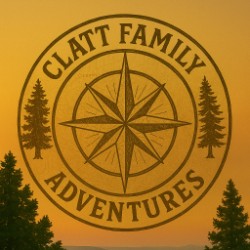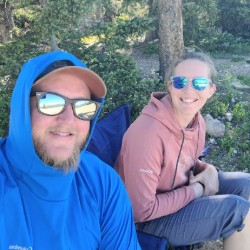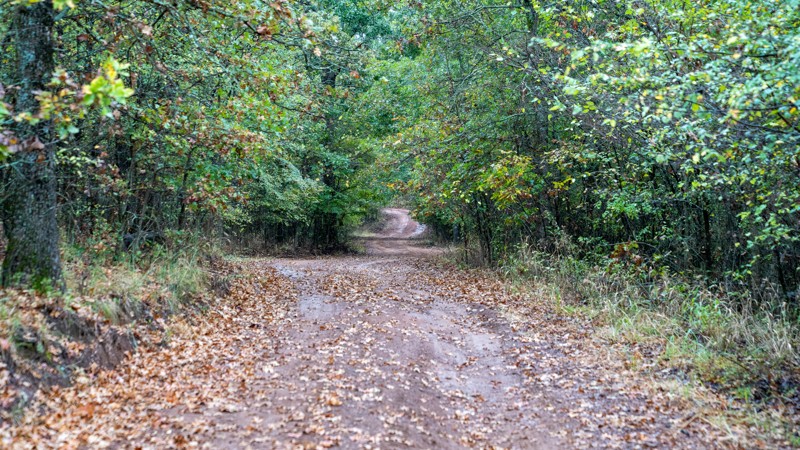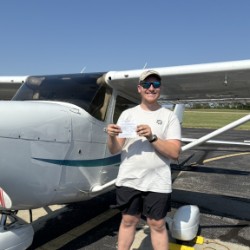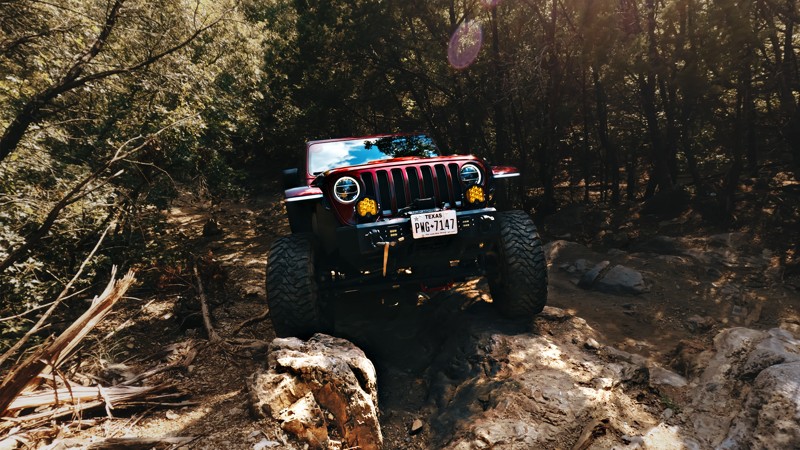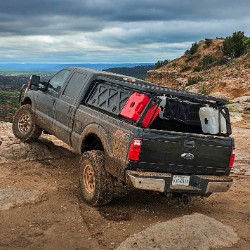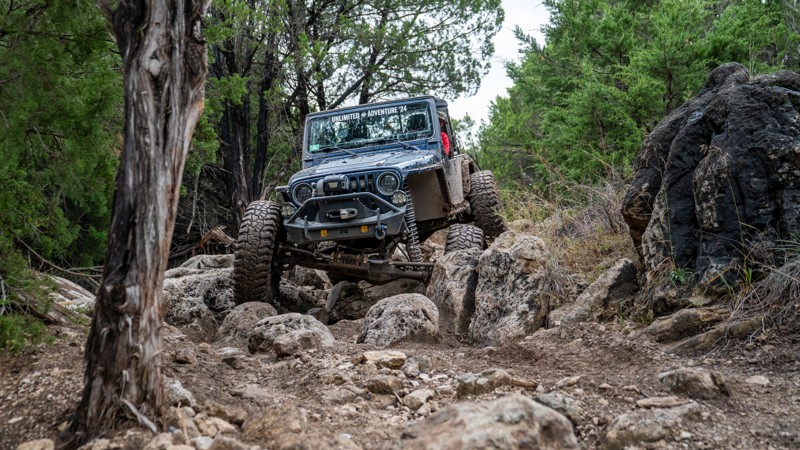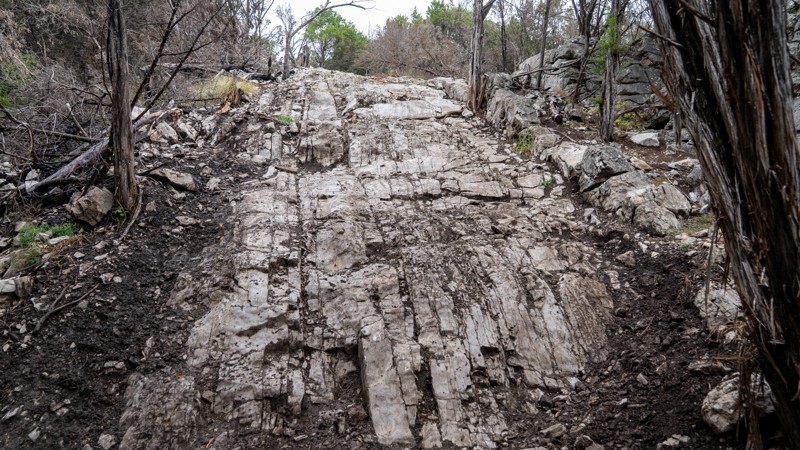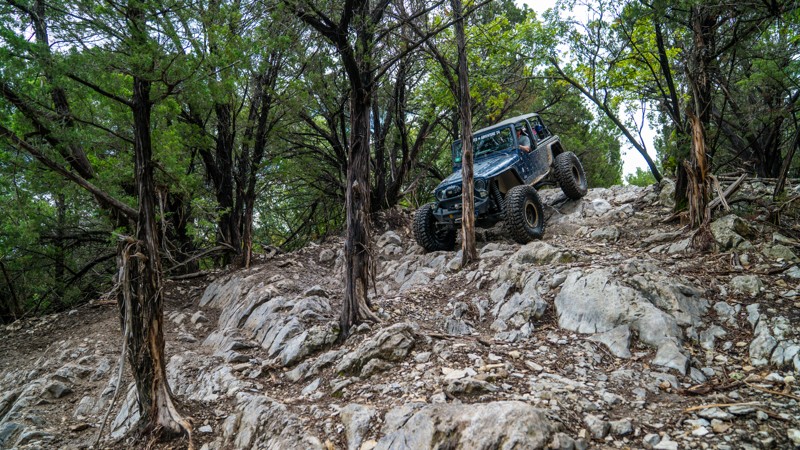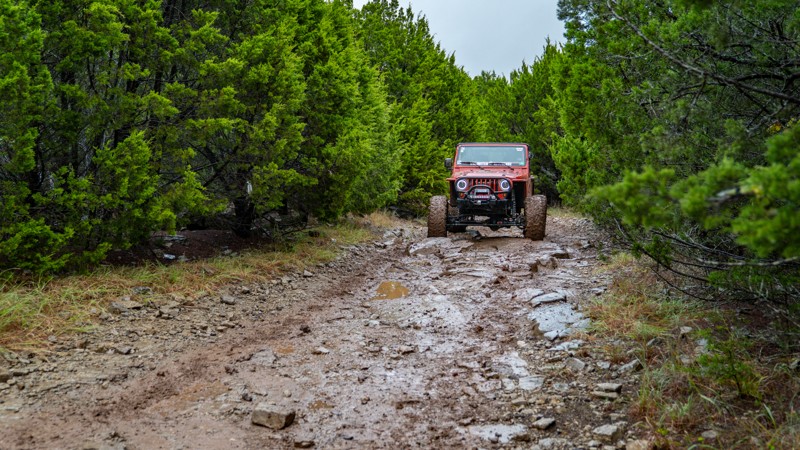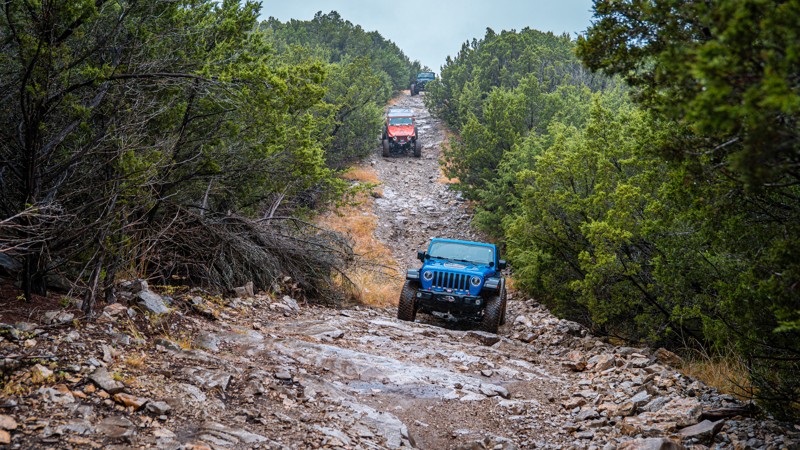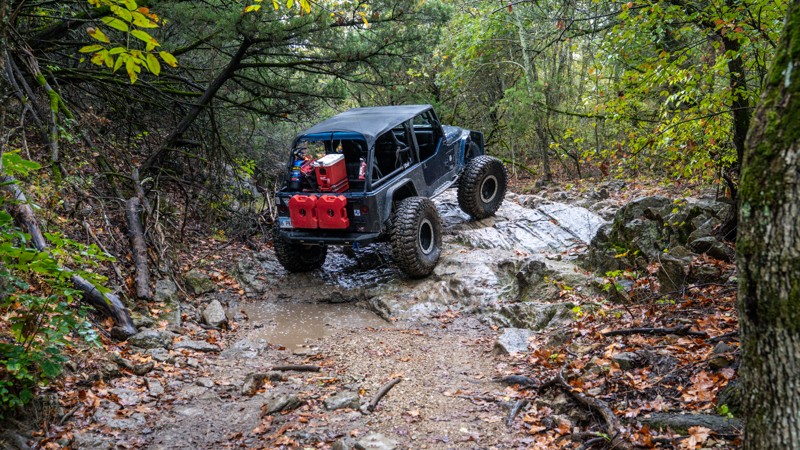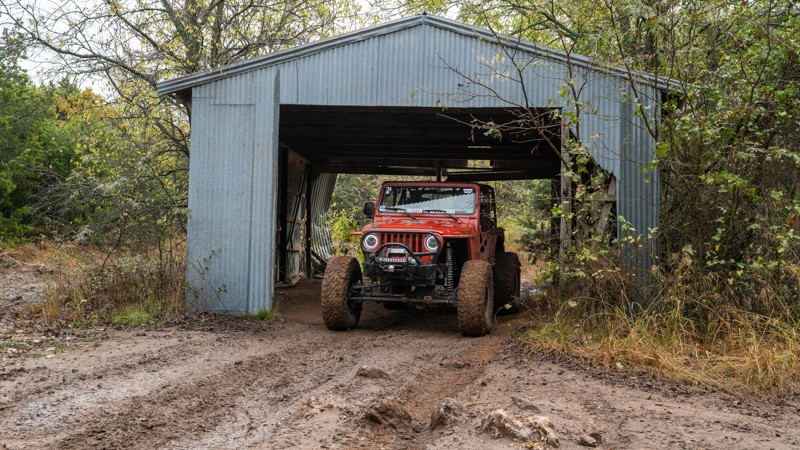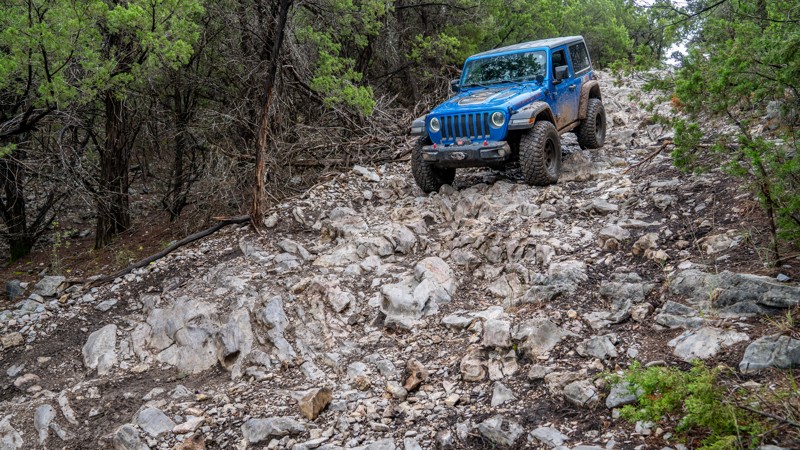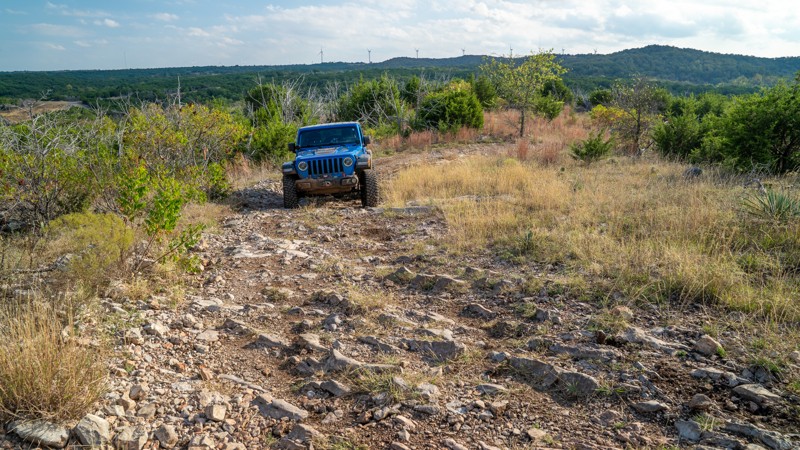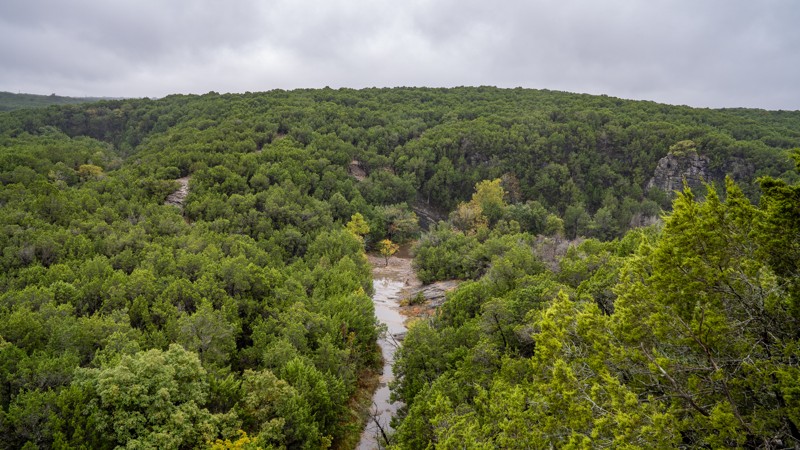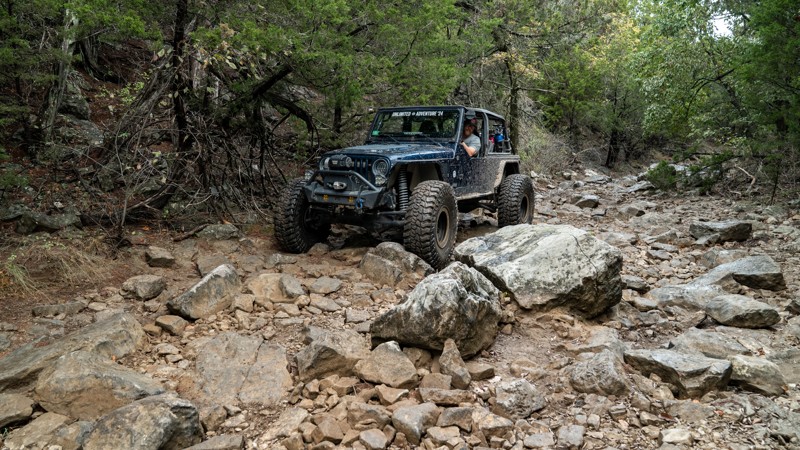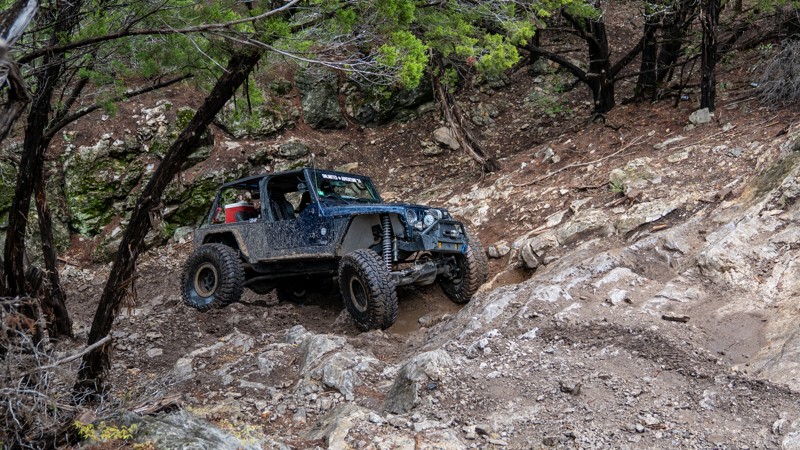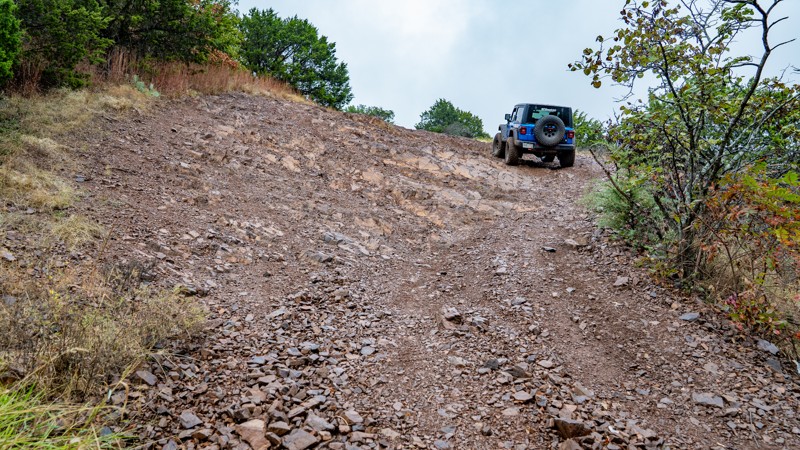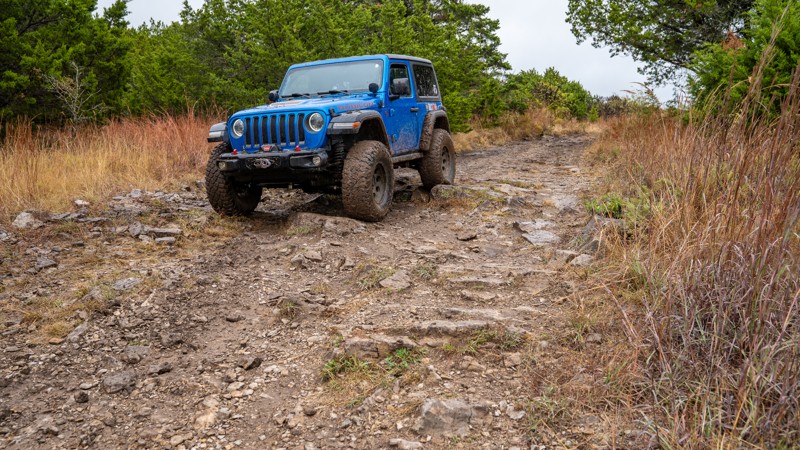Oklahoma Trails
4
Total Trail Guides3

42
Detailed Waypoints30

Try a Free 7-Day Trial and unlock it all
Most Recent Trail Reviews

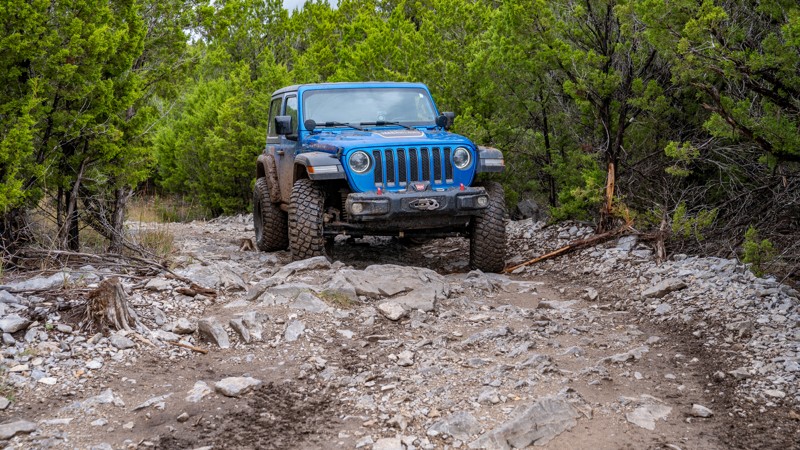
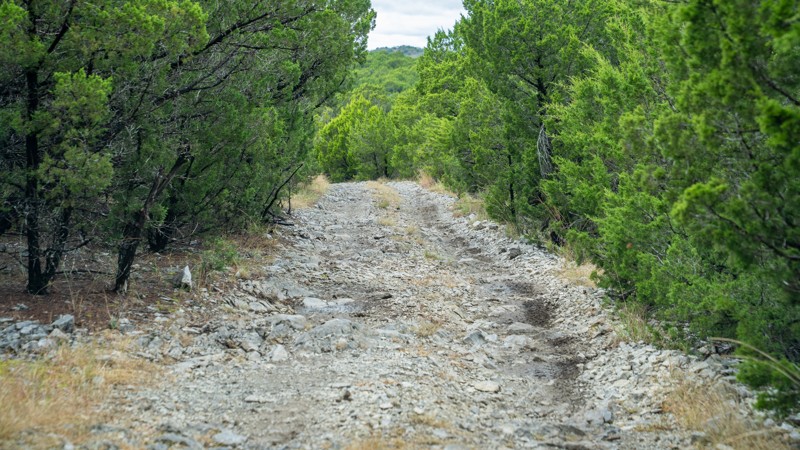
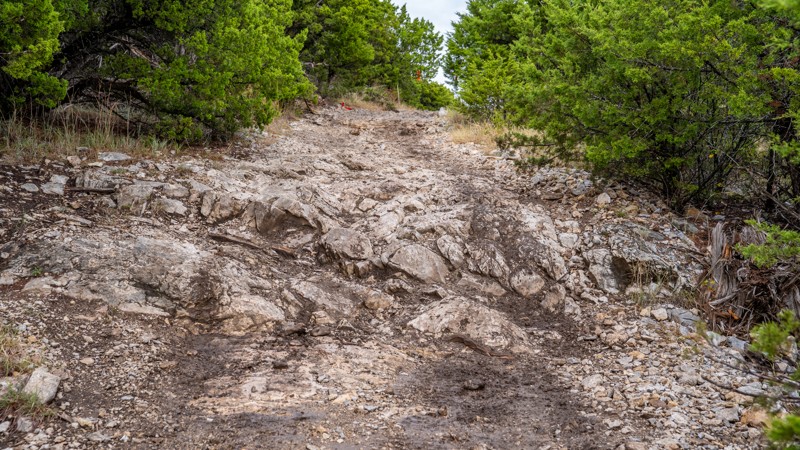
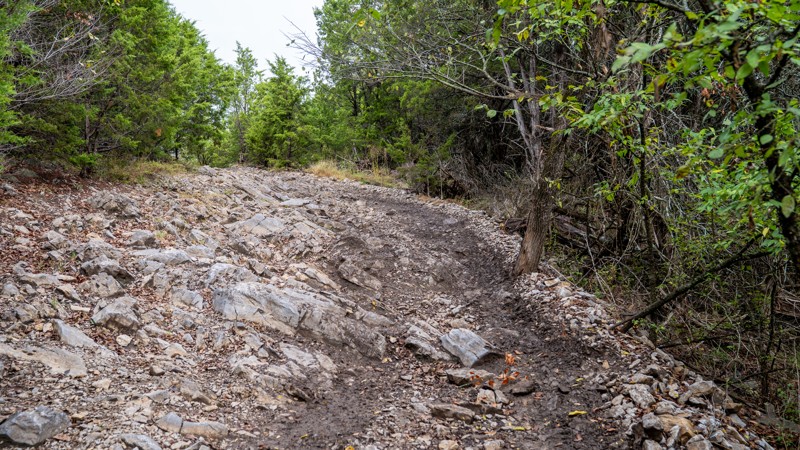




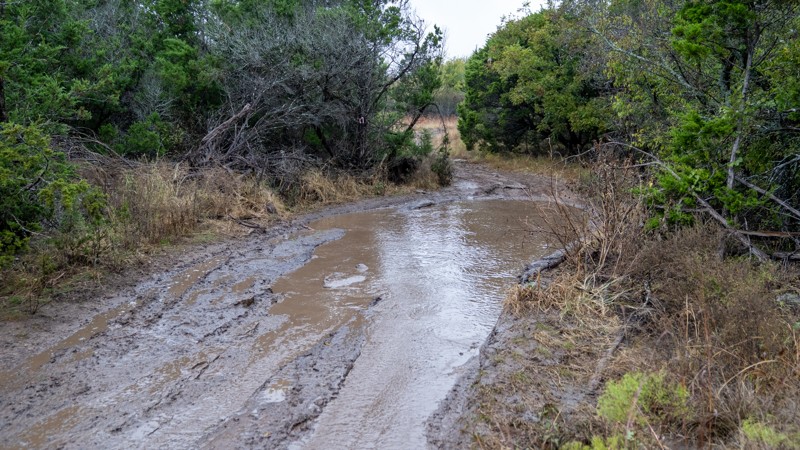


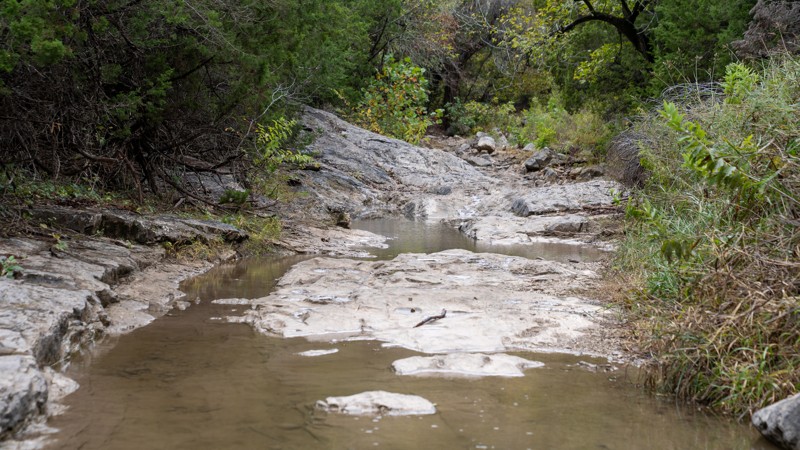





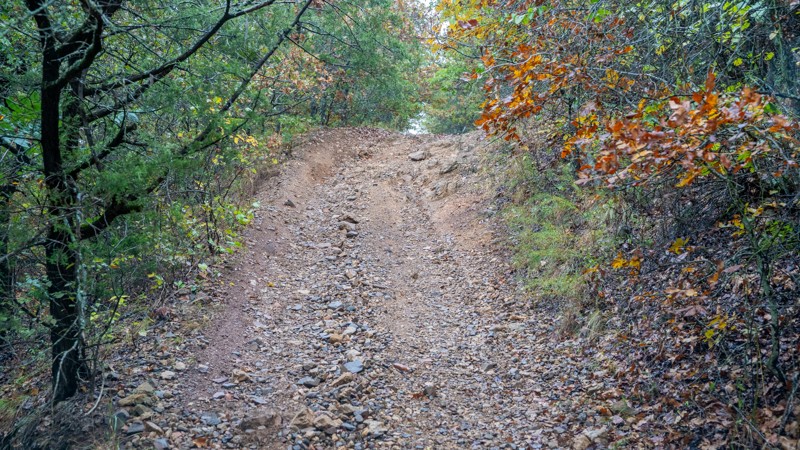

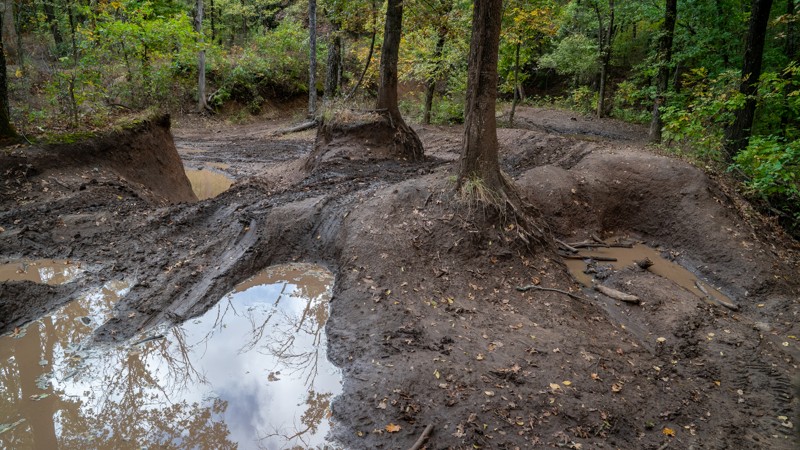
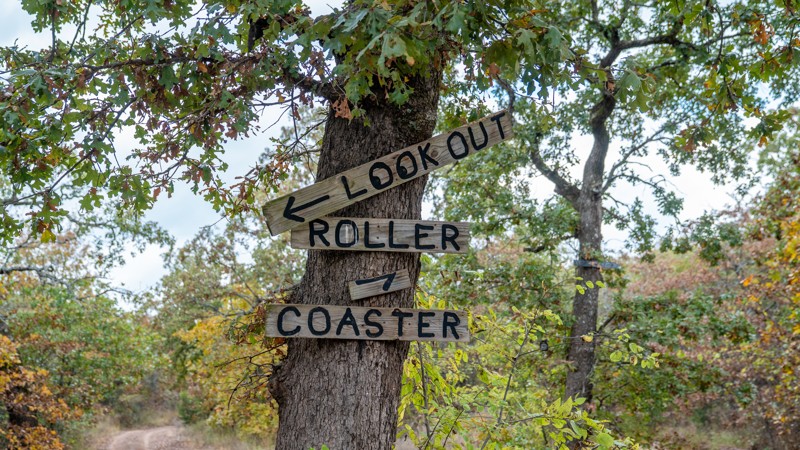

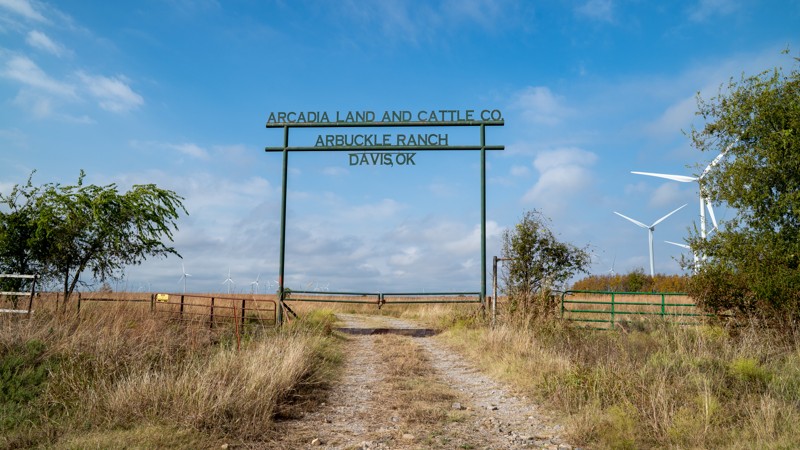



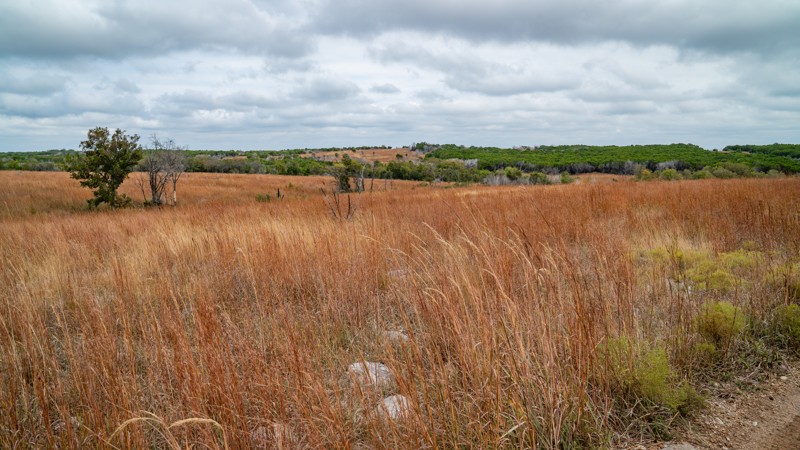


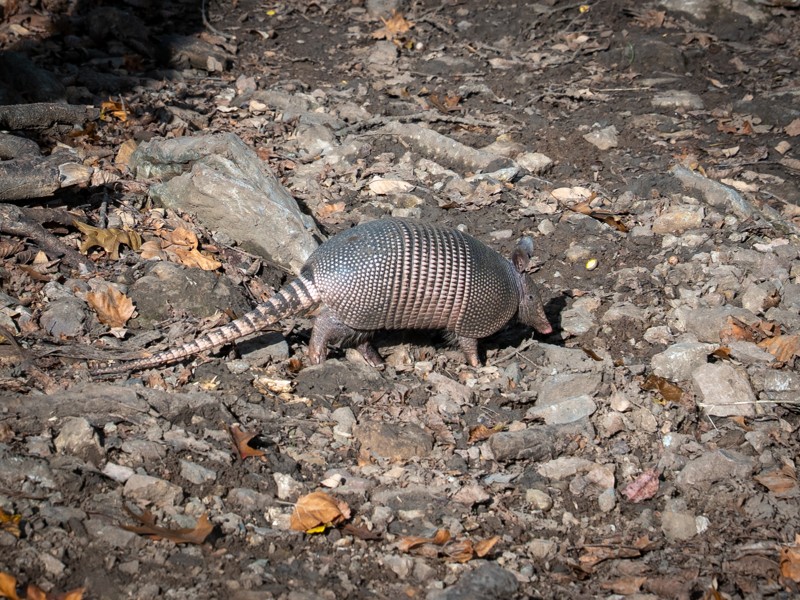

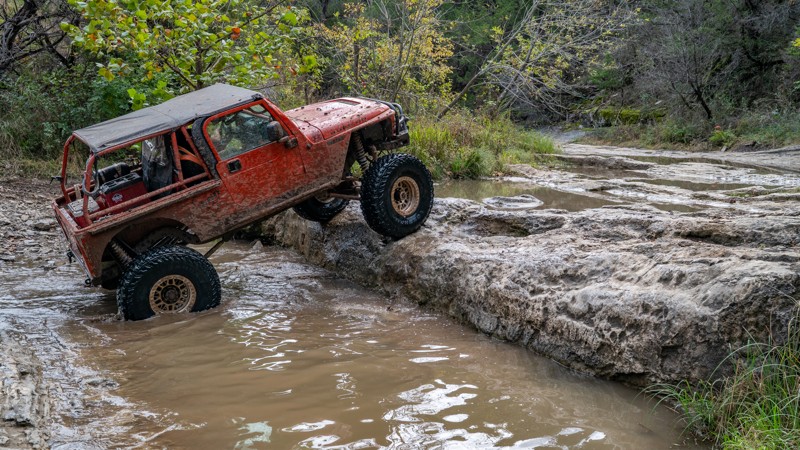
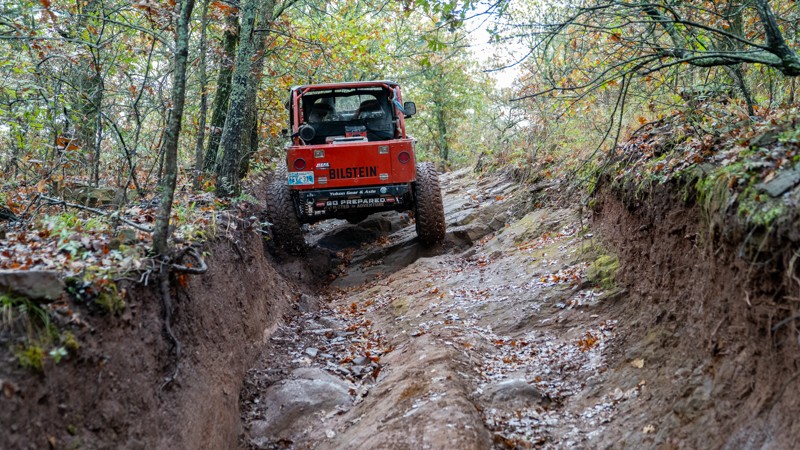


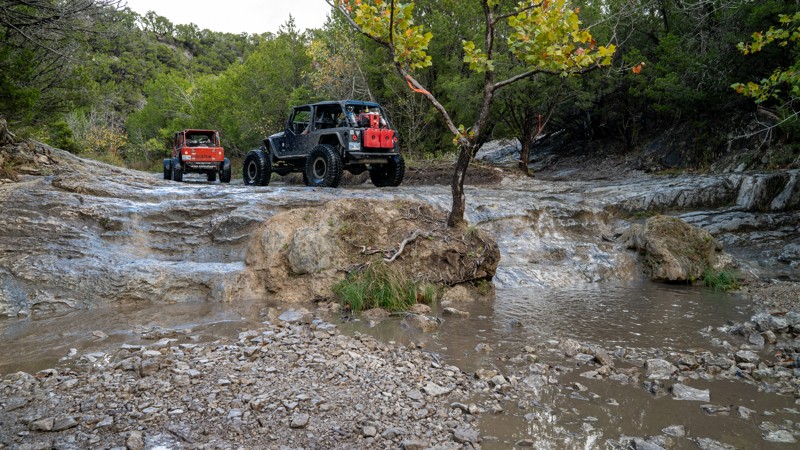


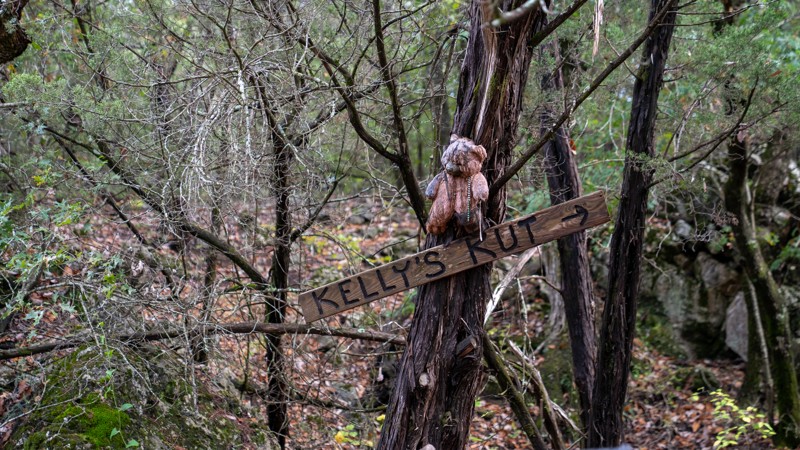

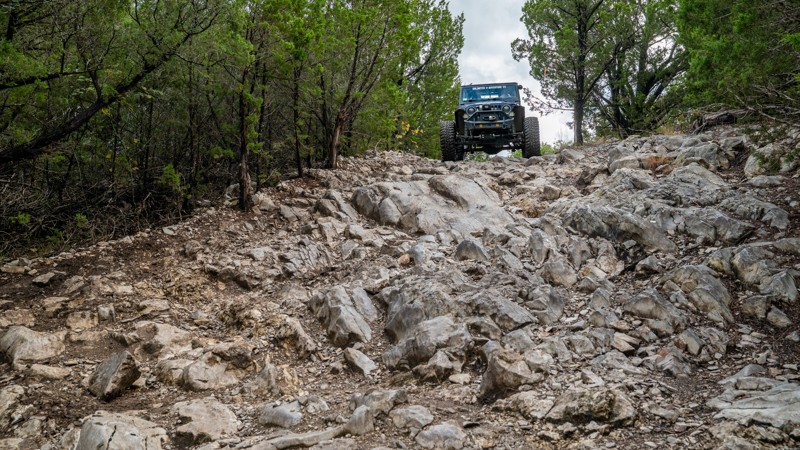
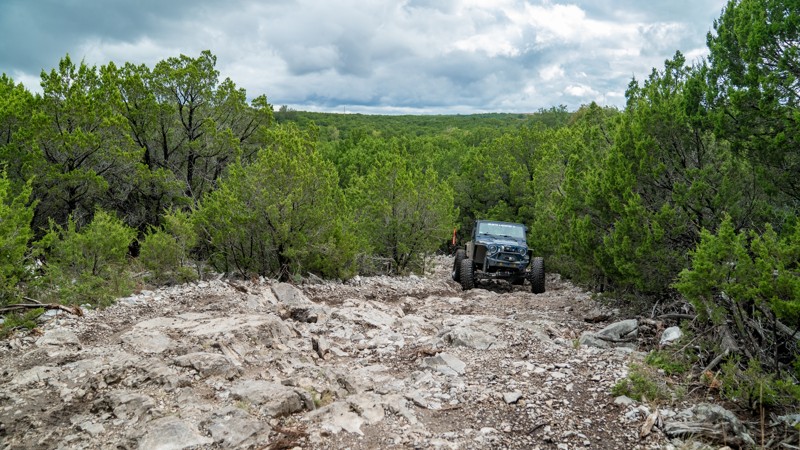





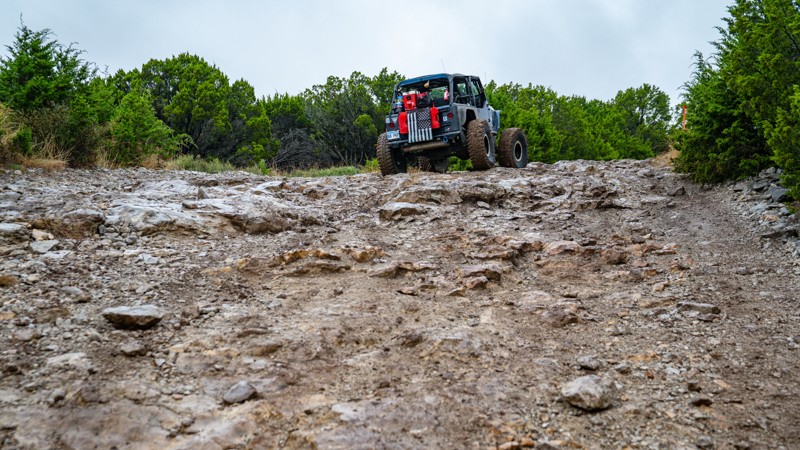
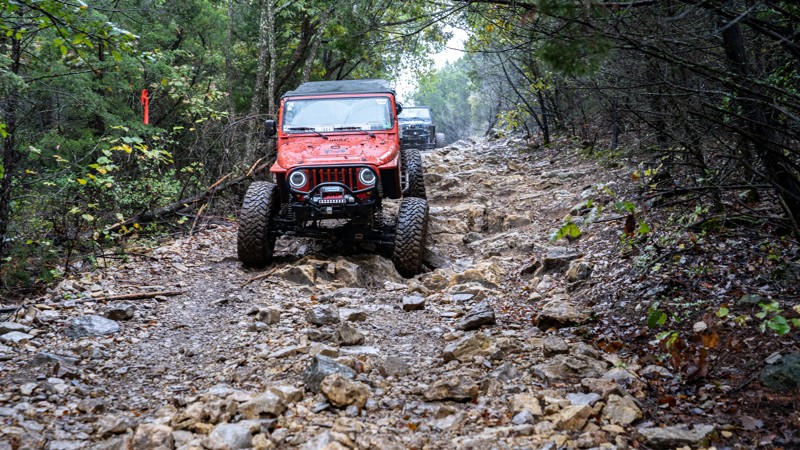
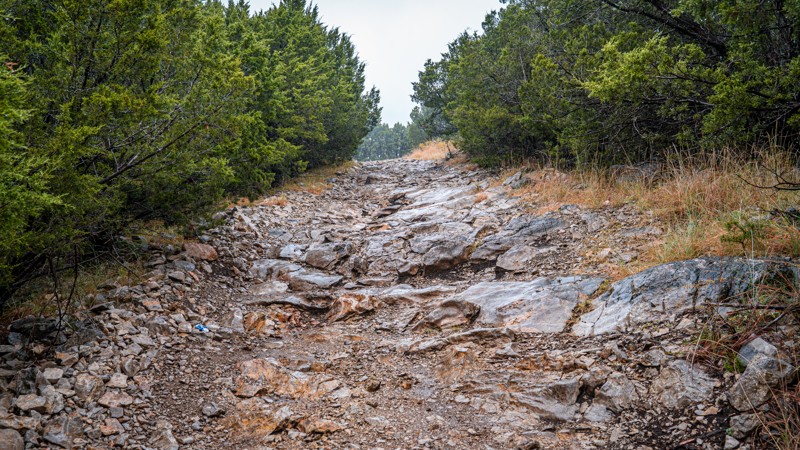





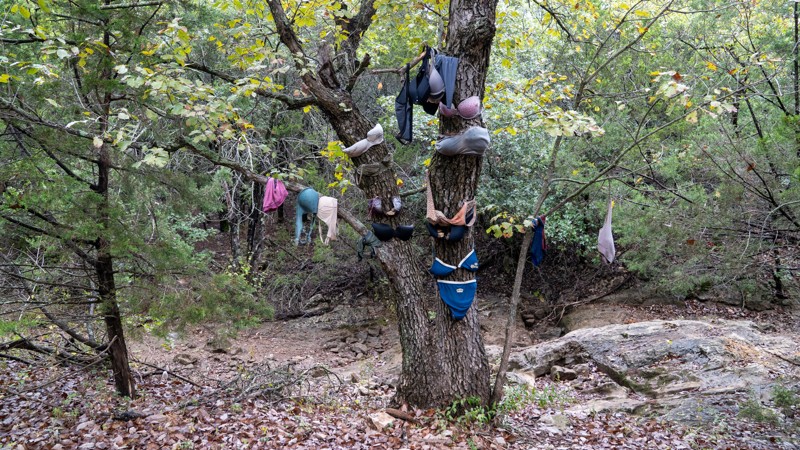
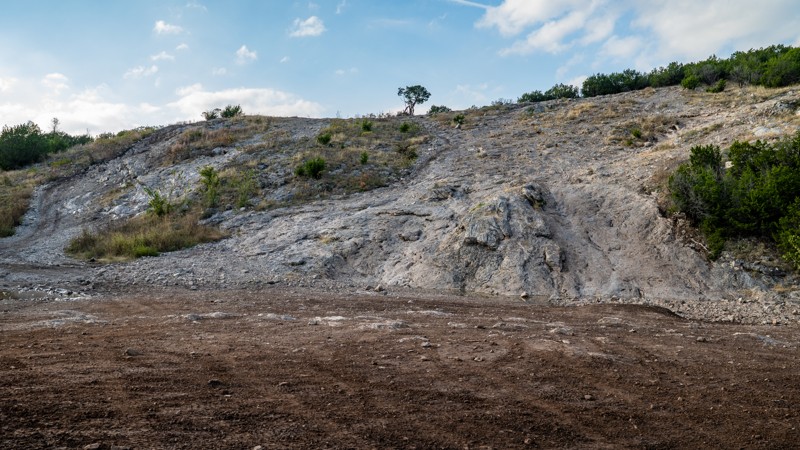

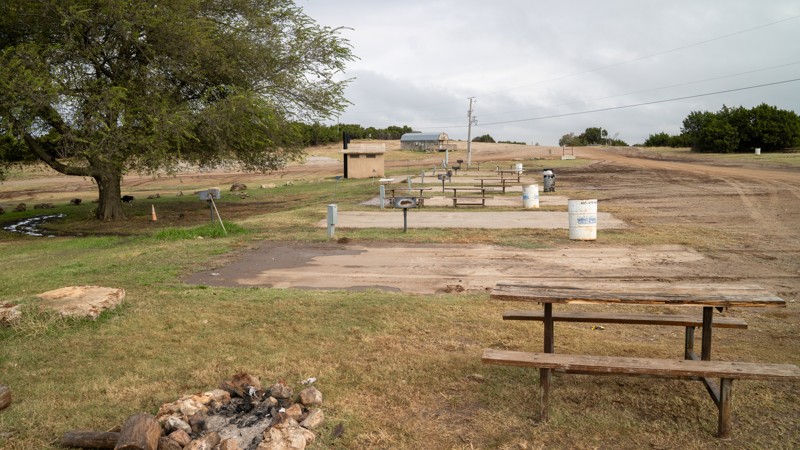
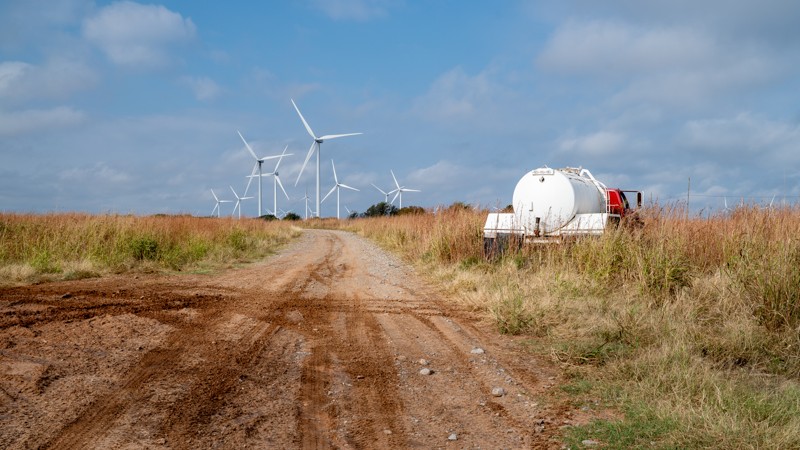

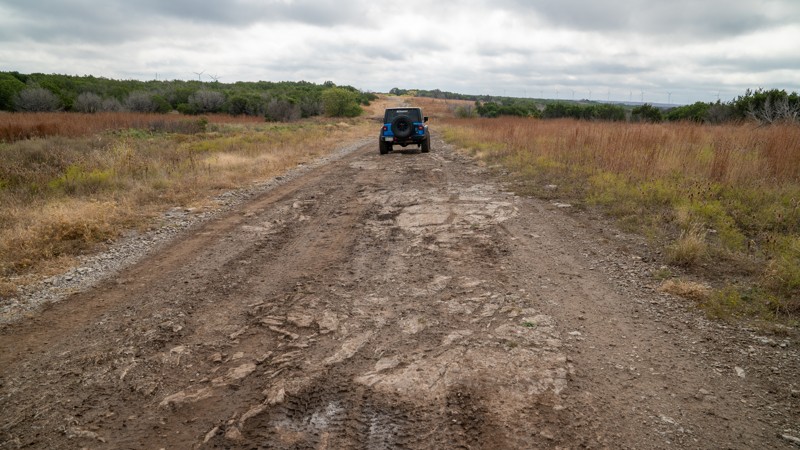


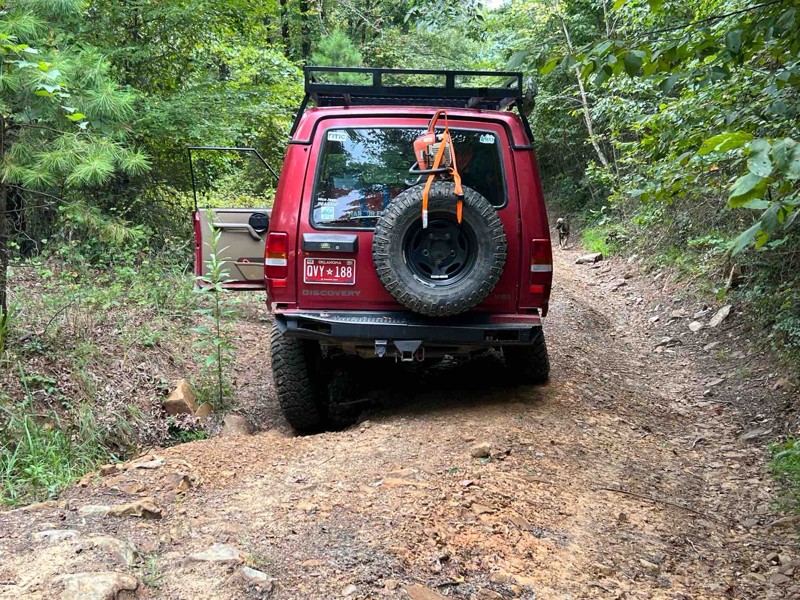


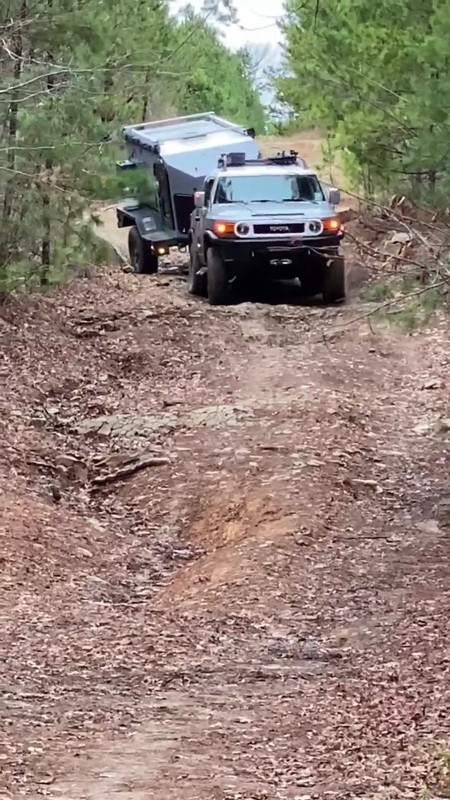





Most Popular
Kiamichi Trail aka (K-Trail) - East Half
GOAT
GOAT is Cross Bar Ranch’s signature rock trail and the park’s first official Jeep Badge of Honor trail. Once you drop the first obstacle, expect a committed run as there are no bailouts. This trail is dominated by chunky rock, stepped ledges, and off-camber obstacles with loose dirt between them, demanding careful line choice and steady throttle rather than brute speed. The difficulty of this trail is severely affected by weather conditions and can often be the only determining factor in driving the trail clean or having a winch-a-thon.
Onion Patch
Onion Patch is one of Cross Bar Ranch’s premier hardcore trails, tucked inside a dramatic rock bowl that pushes both driver and rig from the moment you drop in until you "Give it the Onion" and claw your way back out. The trail is packed with continuous technical challenges and minimal forgiveness, demanding confident driving and a capable, well-built vehicle. Optional side spurs raise the stakes even higher, offering committed drivers a chance to truly push their limits, while spectators watching can also enjoy their own wild adventure. If you’re looking for the heaviest concentration of serious obstacles that Cross Bar has to offer, Onion Patch is a must-run proving ground and a signature highlight of the park.
Dolese Road
Set in the Arbuckle Mountains just west of Davis, Cross Bar Ranch spans roughly 6,500 acres and offers nearly 200 miles of trails for dirt bikes, ATVs/UTVs, and full-size 4x4s. Terrain ranges from easy prairie two-tracks to rocky hill climbs and technical creek-cut canyons. The broad variety, along with plentiful camping, makes it a popular destination for weekend trips and special events. Dolese Road is the park’s main road, used to enter the area, park for day use, link camping areas, and access the wider trail network.
O' Schmidt
O’ Schmidt is widely regarded as the most extreme obstacle in the entire park. Situated at the northern edge just behind the office, this straight-through trail may start tame, but quickly drops drivers into the deep end. It begins with a steep, loose, multi-ledged waterfall descent into a rocky creek bed, followed by an immediate climb up and over a sharply pitched ridgeline, where you’ll face a choice between the main obstacle or a challenging bypass. The main O’ Schmidt climb stretches roughly 30 yards up a near-vertical hillside, starting with 15 yards of loose dirt and rolling rocks before transitioning to slick, polished limestone ledges where traction is nearly nonexistent. The bypass offers no easy escape, featuring an equally steep, shorter ascent littered with deep holes, sizable ledges, and unstable terrain. Both routes converge for a hair-raising descent down a smooth slab that feels more like a porcelain slide than a rock face. The trail then follows the creek bed to the base of the Screendoor obstacle and the Onion Patch, wrapping up one of the park’s most intense, technical challenges.
This trail should only be attempted by the most extreme vehicles and skilled drivers.
Longhorn loop
Longhorn Loop is Cross Bar Ranch’s longest continuous trail, a roughly 7-mile trek that meanders through open high-grass prairie with big, ranch-land vistas and distant windmills. Expect a slow, steady crawl over chunky, embedded limestone, often around 7-10 inches tall, with occasional “Gotcha” boulders lurking in the tall grass. The soil holds moisture, so the surface is frequently slick and soft; however, the higher elevation often disperses water rather than collecting it, which prevents the creation of deep mud bogs, like you might see elsewhere in the park. With few trees and steady, rocky undulations, it’s a scenic but persistent head-bobbing workout, suitable for any stock high-clearance 4x4.
Sooner Express
Sooner Express is a primary road in Crossbar Ranch connecting Dolese Road and Well Camp to Turner Falls Park. It is a wide, easy, but rough, high-clearance road with chunky exposed rock that keeps speeds low. Several trails branch from it, including Longhorn Loop and Cowboy Way.
The western end starts near the outhouse and is initially smooth and easy, passing multiple grassy pull-outs suitable for dispersed camping. Conditions grow rougher as you travel east. The road ultimately meets pavement at Turner Falls Park, where only street-legal vehicles may enter, and an entry fee is required at the entrance station.
Turner Falls, the oldest park in Oklahoma, offers hiking, swimming, and waterfall viewing, along with lodging options ranging from tent and RV sites to cabins, covered wagons, and teepees. On hot summer days, running Sooner Express into Turner Falls makes for the perfect escape from the heat.
Trouble
Trouble is a short but severe connector linking GOAT to the top of Screen Door, carved into a tight cedar canopy with several obstacles that require full commitment and zero hesitation. The trail presents several back-to-back limestone waterfalls and shelves, many of which are polished and undercut, with deep ruts and off-camber leans that tip rigs towards the trees. Several climbs run 10+ feet long with 20-30″ steps, and narrow corridors that make body damage from trunks and branches a common occurrence. When wet, the clay over limestone turns slick and greatly increases the risk to driveline and sheet metal. Expect slow, technical progress with tactical line selection and frequent spotting and winching.
This trail is for built rigs only. Minimum recommendations are 37s, dual lockers, a winch, stout skids, and recovery gear. Hardtops are not recommended due to the likelihood of contacting trees. Different lines can be selected at each obstacle, but there are no bypasses and limited places to turn around. If you commit to Trouble, plan on challenging obstacles and a high likelihood of body or mechanical damage, even in dry conditions.
Crossover Road
Crossover is a straight-through connector that links Dolese Road and Camp Road, letting you bypass Main Camp and the deep mudholes west of it. The surface is mostly hardpacked with exposed limestone, punctuated by a few short rock gardens and a gradual hill just past Loretta Lane, where 10-inch step-ups keep you honest. Expect brushy corridors with guaranteed pinstriping and a mid-trail lookout that fits about half a dozen rigs. It’s also the only access to the south end of GOAT, making Crossover a useful, simpler cut-through for any high-clearance vehicle.
Powerline
As the name suggests, Powerline follows a utility corridor up and down a series of hills, linking Main Camp to Rylee’s Ridge. The surface is mostly chunky, loose, polished limestone and quartz, with several 12-inch ledges to traverse. There are no singular “big” obstacles, just a steady, slow-going, rocky crawl beneath the power lines and a low canopy. Suitable for any high-clearance 4x4, though undercarriage skid plates are strongly recommended.
Trott Line
Trott Line is a continuously rough and adventurous route that climbs from Camp Road to the summit of Lookout Mountain, rewarding drivers with wide-ranging views of the Arbuckle Mountains. This diverse trail showcases the full variety of Cross Bar’s terrain, shifting from limestone flats to muddy creek bottoms and rugged sandstone climbs.
The eastern section begins as a wide, cedar-lined path over uneven limestone, with moderate ledges and ruts that flex suspension and demand careful tire placement. The middle section drops into a shaded hardwood creekbed where deep mud, trenches, and off-camber slopes keep drivers on alert. As the trail rises toward the west, the terrain changes dramatically, traversing a red sandstone where you encounter a series of 2-foot sandstone ledges before making its way to a loose, rocky incline that marks the final climb to the top of Lookout Mountain.
Trott Line is rated lightly difficult and best suited for modified 4x4s with small lifts and larger tires. Stock high-clearance vehicles may navigate much of the trail in dry conditions, but traction and clearance become critical after rain or in the deeper ruts of the midsection.
Camp Road
Camp Road is a main park artery that connects Main Camp to Rock Face as it travels northwest toward many of Cross Bar Ranch’s most popular trails and attractions. Although considered one of the park’s main roads, it is far from an easy access route. Expect challenges such as mud, large ruts, mild off-camber sections, and consistently bumpy terrain.
A short distance west of Main Camp, the road drops steeply into a creekbed with multiple line options, including 2–3-foot trenches and mudholes. Sporadic mud pits continue as you pass Wagon Wheel Road and approach The Bus, one of Cross Bar’s most recognizable landmarks. From there, the terrain turns rough and rocky, with small exposed rocks scattered along the wide path leading to the base of Rock Face. This open area offers plenty of space to park and watch other drivers test their skills on the face.
This trail is suitable for any stock, high-clearance 4x4. However, during wet conditions, stock vehicles should use caution when navigating the mudholes between Main Camp and Crossover.
Wall's Way
Wall’s Way, in the park’s northeast corner, is a half-loop with three distinct segments: North, East, and South. It can be driven in either direction, though clockwise is more engaging.
The North section cuts through dense woods where pinstriping is inevitable, then climbs a steep hill broken by a series of 2–3 foot ledges. Multiple bypasses let you choose your line. The East section follows a narrow creek bed filled with steady grapefruit-size rock and offers an optional rock slab obstacle with a mild grade and gentle undulations that work the suspension. The South section gradually leaves the drainage, twisting between tight trees over softer soils. Numerous depressions and ruts hold water, creating shallow mud pits. One off-camber rut has developed into a 3+ foot deep trench on one side; expect fender rub and mirror contact if your axles don’t extend beyond the vehicle’s body.
This is not a good trail for long-wheelbase vehicles such as trucks and Gladiators. While dry conditions may let a stock vehicle complete it, larger tires and at least one locker are strongly recommended. Running clockwise means climbing the steep hills and ledges; counterclockwise means descending them. Thanks to the available bypasses, overall difficulty is similar in either direction.
Cowboy Way
Cowboy Way is a scenic and adventurous route connecting Well Camp to Turner Falls, winding through low-canopy woodlands and open grasslands behind Well Camp. The road is rough but not technical, featuring stretches of exposed rock, muddy sections, and ruts up to 12 inches deep that make for a slow, bumpy ride. While the trail doesn’t pose major challenges, it does promise plenty of pinstriping, so those protective of their paint may want to steer clear. For everyone else, Cowboy Way offers a great introduction to off-roading and can be enjoyed year-round. Even in wet conditions, an aggressive stock high-clearance vehicle should have no trouble making the journey, though smaller rigs may appreciate having a winch on hand if the trail has recently seen heavy rain.
Barn Road
Barn Road is a straight-through mud run across the low, shaded Soggy Bottoms, linking Camp Road on the east to Trot Line on the west. A photogenic, weathered shed headlines it called “The Barn," which you can either drive through or around. Don’t let the quaint landmark fool you, however, west of the barn, the trail drops into trenched ruts, multiple creek crossings, and sticky clay wallows. Some water lines stay in the 12–24 inch range; others are deep enough to bury a rig to the frame, with off-camber dips that can lean you hard into the trees. Difficulty swings wildly with recent rain. In wet conditions, expect a tire-spinning, technical slog where lockers move from helpful to essential; even in drier spells, the churned ruts and soft bottoms make larger tires and a winch essential. It’s a classic Cross Bar challenge, mud-forward, recovery-friendly, and capped by a cool bit of ranch history at the trail’s namesake barn.
Loretta Lane
Loretta Lane is a straight-through connector linking Crossover to Trouble and finishing at the top of Screen Door, making it the easiest in-and-out route for the Onion Patch area. Expect a rough, slow crawl over loose, chunky limestone rock the size of footballs and volleyballs. You will encounter a few steep hills with polished, 1-foot limestone ledges, mild off camber leans, and shallow mudholes in the low-laying midpoint. Southbound is slightly tougher since you’ll be climbing the steeper hill near the north end. Lockers help but aren’t required. Overall, it’s a solid moderate trail for high-clearance 4x4s that rewards careful line choice without demanding heavy modifications.
Roller Coaster
Roller Coaster is a south-to-north connector between Dead Man’s Slide and Lookout Mountain in Cross Bar Ranch. True to its name, it rides a rhythm of short, steep climbs and descents stacked with 14–20-inch ledges and steps. The rock is a mix of limestone and sandstone, offering different traction amounts at different times. Midway through the trail, a quick loop around a hilltop delivers a wide view east across the park. The steepest pitch and biggest ledges sit near the north end just before the Dead Man’s Slide junction, making a northbound run slightly easier since you’ll be descending the largest obstacles.
This is a challenging trail, best suited for modified high-clearance 4x4s. Expect frequent skid contact. Heavy-duty skids, larger tires, and low gearing are recommended, with lockers helpful depending on direction of travel and moisture. Traction drops fast after rain, so air down, spot the bigger steps, and plan your lines before committing.
Culdesac
Culdesac is a tight, lollipop-shaped out-and-back that winds through the trees, crosses Wall’s Way, then climbs two steep, loose limestone hills with small polished ledges. The hills require steady commitment and maintained momentum. In dry conditions, any high-clearance vehicle should make the climbs without trouble. When wet, the slope turns slick and the ascents become significantly more difficult. Expect pinstriping on the section east of Wall’s Way.
North Face
North Face is a straight-through trail that cuts across an unusual red sandstone section of Cross Bar Ranch, linking the Bus landmark to the base of Look Out Mountain. The eastern approach offers two tight, overgrown entrances from the Bus area. One passes through a tunnel of cedar trees and crosses a soft-bottomed mud hole, making it the best option for longer or wider rigs. The second, marked as BYOC, drops into a muddy ravine and threads between extremely tight oak trees that will challenge even experienced drivers in full-size vehicles. Beyond the mud, the trail climbs its signature obstacle, a short but intense channeled sandstone hill with off-camber, 1-foot steps, and deep trenching along one side.
After the sandstone chute, North Face follows a narrow ridgeline through more overgrown hardwoods, with bumpy terrain and one moderate hill climb before tying into Roller Coaster just north of Look Out Mountain. This is not a trail that demands an extreme build, but a small lift, larger tires, and at least one locker are highly recommended. A winch is very helpful if you cannot clear the sandstone climb under your own power. Due to the tight trees and brush along nearly the entire route, pinstripes are unavoidable.
Wheeler Peak
Wheeler Peak is a scenic, rugged trail tucked into the northwest corner of Cross Bar Ranch. The route climbs behind the iconic Rock Face and offers long-distance views across the surrounding Arbuckle mountains. This is a rough, rocky, and slow-moving trail carved across exposed limestone, where most of the trail consists of baseball- to grapefruit-sized rock that keeps tires working and suspension flexing.
Rock Face marks the trail’s eastern end and serves as either the opening challenge or the grand finale, depending on the direction of travel. This broad limestone wall presents multiple lines with varying ledge sizes and angles. The smoothest line rises through the middle, although even this option has 1-foot ledges and mild to moderate off-camber sections. Several ledges appear smaller than they actually are, so careful spotting and slow, deliberate driving are essential.
Although it can be completed by any high-clearance vehicle and the most technical features are avoidable, Rock Face itself is an intimidating and potentially risky climb or descent. Drivers should have off-road experience before attempting it, especially when conditions are wet or traction is limited.
Gin N Juice
Gin N Juice is Cross Bar’s shady backbar, a quiet connector that slips under low-hanging canopy between Rock Face and GOAT while offering quick pours into side trails like Copperhead Hole and Kelly’s Kut. The track maintains a mellow rhythm, featuring firm dirt with scattered rocks, creek crossings that cool the brakes, and a few 10–14 inch ledges with optional step-ups for those seeking to increase the difficulty. It’s a great sampler for stock high-clearance rigs and UTVs. Pick smart lines and mind the undercarriage on the ledges, and you’ll roll through with a smile, dusted with cedar scent and a splash or two from the creek.
Riley's Ridge
Riley’s Ridge (also signed “Rylee’s Ridge”) follows a narrow ridgeline above the Onion Patch with sweeping looks down toward TSOB, Hell’s Gate, and a tributary of Colbert Creek. It can be run in either direction, but it is easier downhill from east to west. The eastern approach is a relaxed run off the Main Road, winding through thick pine along a rough, bumpy dirt road with scattered embedded rock, before opening to a handsome overlook of the Onion Patch.
Past the overlook, you’ll choose between a short, moderate, and ledgey drop to a parking area above Hell’s Gate or the more difficult, slippery descent to the creekbed of O’Schmidt. The steeper hill mixes polished 2–3 foot limestone ledges with clay that turn extremely slick when wet, demanding careful throttle and tire placement.
No matter the route you choose, this trail is best suited for modified vehicles with larger tires and heavy-duty skid plates. If traveling the trail west to east, lockers are highly recommended.
Upper TSOB
Upper TSOB is a direct connector from Crossover and the Hub Hill area to the top of the Screen Door obstacle, trading views for challenge as it climbs over a run of steep hills. The surface is rough and ledgy, with chunky limestone steps up to two feet tall that demand careful throttle, smart tire placement, and a willingness to hear your skid plates work. It can be driven either way, but northbound is kinder, as most of the biggest drops become controlled descents instead of climbs. This trail may be on the lower end of the difficult scale, but it should only be attempted by modified rigs. Larger tires, stout skid plates, and low gearing pay dividends, and undercarriage scraping is all but guaranteed. Expect a slow, technical crawl that links key parts of the hardcore area of the park.
TSOB
TSOB is one of the less challenging exits from the Onion Patch area, but it is far from an easy route. It begins with a 7-foot waterfall climb and then follows a hard-bottomed, water-filled creek until the water disappears, leaving a bed of chunky, jagged, polished limestone ranging in size from footballs and dinner plates to beach balls and coffee tables. The terrain is a continuous onslaught of rocks with periodic 2-foot ledges and waterfalls to keep things interesting. The narrow creek bed limits line choice and offers virtually no bypasses around the roughest sections. This trail is best suited for modified vehicles with larger tires, skid plates, rocker protection, and a winch. Lockers are highly recommended but not absolutely necessary.
Kellys Kut
Kelly’s Kut is a very short spur off Gin N Juice, just east of Rock Face in the northwest corner of Cross Bar Ranch. The route takes only a few minutes to run and exists mainly for a single obstacle in the middle of the trail. That obstacle is a multi-ledge waterfall climb over loose dirt and polished limestone, with several tire-swallowing holes to avoid. Multiple lines provide different levels of difficulty, making it a quick, focused challenge best suited to modified vehicles. A spotter and careful tire placement are recommended.
West Fenceline
West Fenceline rides the boundary of the Arcadia Land & Cattle property. At just over a mile long, this trail trades speed for scenery as it links Longhorn Loop to Barn Road. Expect a mix of soft, trenched dirt and embedded limestone chunks in the 10–14 inch range that keep your tires tiptoeing and your skids busy. Optional mudholes add a choose-your-own-adventure burst of adrenaline, but the deepest pits can be bypassed with smart line choice. Under normal conditions, any stock high-clearance 4x4 or UTV can make the run. After rain, plan for a slower crawl and the possibility of a quick recovery drill.
Camber Park to Dead Man's Slide
Camber Park is a half-circle-shaped trail in the northwest end of the park that takes users past one of the most famous and hardcore obstacles within Cross Bar Ranch: Dead Man’s Slide. The main trail is a mix of hardpack and exposed limestone that traverses a couple of water crossings and weaves through some tight vegetation. You will also encounter significant mudholes on the north half. The southern end of the trail is where you will find the optional Dead Man’s Slide, a daunting hill climb of rolling and slanted sandstone ledges. There are various lines up the hill climb, none of which are considered easy. The area below Dead Man’s is a wide, flat area, and a popular hangout spot.
Copperhead Hole
Copperhead Hole is a narrow, tight trail that links Gin N Juice with Camp Road as it winds through a muddy ravine. The shaded, soft terrain holds moisture year-round, so expect mud in all seasons. Three primary mud holes average 14–18 inches deep but can reach up to 36 inches after heavy rain. Trees crowd the trail’s edge, virtually guaranteeing fresh pinstripes down the sides of your rig, and several off-camber sections can tip your windshield into leaning trees if you are not careful. While the trail is suitable for any high-clearance vehicle, a winch and full recovery gear are must-haves.
Coaster Cutoff
Coaster Cutoff is a straight-through connector trail linking Lookout Mountain to Camp Road as it heads toward the Rock Face area. While it bypasses the difficult challenges of the nearby Roller Coaster trail, it still delivers a fun rollercoaster-like experience with several steep climbs and descents across mixed terrain.
The trail surface alternates between hardpack and small, loose rock, creating a mildly bumpy but manageable drive. Two short, off-camber hills near the midpoint and southern end keep things interesting, though most of the route remains mild and steady. The main challenge comes at the northern end, where a deep, rutted hole filled with embedded rocks can snag lower vehicles or those with poor tire placement. A narrow bypass skirts the obstacle but forces drivers close to leaning trees.
With careful line choice and good ground clearance, Coaster Cutoff can be handled comfortably by most high clearance vehicles. It’s a great alternative for drivers seeking a scenic, moderately bumpy route without the full intensity of Roller Coaster.
Wall's Way Bypass
This is an easy, packed dirt road with a few low depressions that create shallow water holes during wet conditions. It is primarily used as an access road to a private residence southeast of the intersection with Wall's Way. However, the road is additionally used to cut off the North and East sections of Wall's Way and create a bailout for users running Wall's Way in the counterclockwise direction. It also creates an alternative entrance to the Cul-De-Sac Trail.
Wagon Wheel Road
Wagon Wheel is an easy, well-drained connector across Cross Bar’s red sandstone area of the park, linking Camp Road to the south end of Roller Coaster and the Lookout on the west end of Trott Line before dead-ending at a private gate. The surface is mostly packed dirt and sand, so even after rain, it sheds water quickly and stays manageable. It’s a straightforward, relatively smooth cut-through that’s ideal for any vehicle looking to move efficiently between major routes without the mud drama common elsewhere in this area of the park.
Bedlam Boulevard
Bedlam Road is a straight-through, rough two-track that winds through the open grasslands on the east side of the park, connecting Cowboy Way and Sooner Express. It’s so lightly traveled that it feels like you’re forging your own path across an African savanna, with tall grass rising above the hood, brushing against the undercarriage, and occasionally concealing a few surprise rocks that could disrupt your alignment. Despite its rugged appearance, the trail is relatively easy and suitable for any high-clearance vehicle. With minimal mud, it’s an excellent choice even on rainy days. While most trees have been cleared and trimmed back, light pinstriping is still possible from encroaching shrubs.
Loretta Alternate
Loretta Alternate is a short spur off Loretta Lane that avoids the mudholes you find on Loretta Lane, but does not bypass any major rock obstacles. It offers the same type of experience with chunky, loose limestone rock and a few steep climbs. Rocks are slightly bigger along this alternate, ranging from volleyball to basketball size. However, the trail is still suitable for any high clearance vehicle.
Short Course Bypass
Short Course Bypass is a straight-through trail that accesses the west side of the short course and travels along the course for a very short section. It is a moderately rough trail with sporadic 12-inch rocks throughout and deeper ruts and mudholes along the north end. This is suitable for any high clearance vehicle. However, the north end is a bit rougher with more diff-catching rocks to be cautious of.

Upgrade your Membership
Unlock all of the details on every Trail Guide and Scout Route.
Start a 7-day Free Trial





